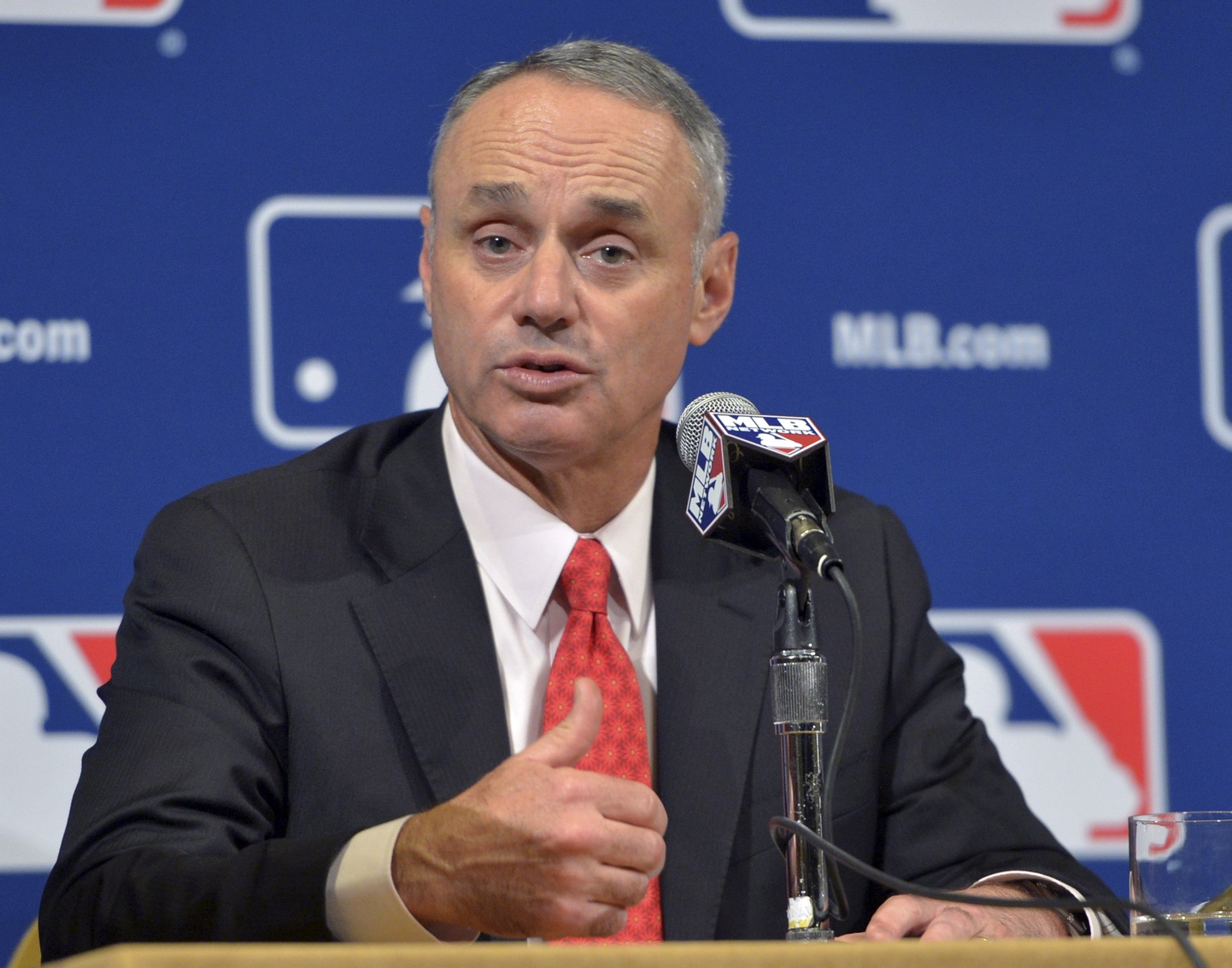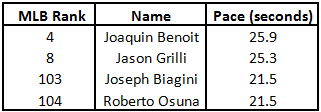Last week Rob Manfred came out with his latest ideas on how to fix the game of baseball. As usual, they included some drastic changes. This most recent round of ideas comes in the midst of collective bargaining agreement discussions, and thus has to be taken with a little more than the usual “we will consider everything” grain of salt. The suggestions that Manfred has put forward include some re-hashed ideas, like the pitch clock and banning shifts, with a couple of newer ideas including shrinking the strike zone and limiting pitching changes.
The mission here is pretty obvious. The commissioner’s office wants to improve pace of play, but they also want more offense. It’s not too hard to see why; no-hitters and perfect games are exciting, but they’re rare. Offense is what sells the game. The casual fan simply isn’t going to be as enthralled watching a 1-0 pitcher’s duel as they will seeing a back and forth 9-8 game.
But there are hidden layers to explore. Considering the recent waves of Tommy John surgeries, teams are being as cautious as possible with their arms. One need look no further than the Toronto Blue Jays and the constant struggle with Aaron Sanchez. Sanchez is a prized arm and the team is in contention, but they have still gone to a six-man rotation and have skipped the young righthander. Pitcher health is that important.
This is what makes Manfred’s suggestions so scary. They go beyond simply making the game swifter and more hitter friendly. They are making the game more dangerous for pitchers.
The easiest target, and sadly the most likely for an MLB push for inclusion, is the pitch clock. Dr Mike Sonne (contributor to BP Toronto) has done in depth research on the subject, and there is very real risk when it comes to putting artificial constraints on time between pitches. The problem is one of rest. The shorter amount of time there is between pitches, the more risk and strain is placed on the arm. That alone makes the proposed rule change bad enough, but there is also the very real concept of pitcher rhythm to consider, and this is where the other rule changes start to come into play.
Pitchers take the time they do between pitches for a reason: it’s how they are comfortable throwing, and it helps lead to their success. If you arbitrarily change that rhythm by forcing a 20 second time limit, a pitcher’s routine would suddenly be thrown off. Naturally, that would hit some pitchers worse than others. There are four current Blue Jays whose bases empty pitch rate is slower than 20 seconds (minimum 50 pitches):
As you can see, Benoit and Grilli are among the slowest workers in all of baseball. They would have to make massive adjustments to their current style in order to meet potential pace demands. At their ages, that seems exceedingly unlikely and very difficult. However, Osuna and Biagini are worth looking at as well. It may not seem like much, but 1.5 seconds is still a significant gap to cover. Considering how early they are in their careers and the success they’ve shown thus far, any sort of mechanical tinkering is something the team would want to avoid.
Those four Blue Jays and many pitchers on other teams (200 total pitchers are averaging 20+ seconds with the bases empty) would have to change their patterns, which likely would lead to some variable drop in performance. This is where the other proposed changes come into play. We already have reduced effectiveness from the pitch clock, but when you throw in a shrinking strike zone and lack of shifts, things become especially hazardous.
A smaller strike zone will lead to more baserunners, either via walk or hit.. That’s just an obvious and intended consequence, and thus requires little analysis. A ban on shifts would, in theory, also lead to more hits. Teams wouldn’t be able to place their fielders in the optimal positions to turn batted balls (of which there would be more) into outs, which would in turn lead to more baserunners (though BABIP hasn’t noticeably changed since shifting became prominent, which makes one wonder why Manfred cares at all). Both of these consequences would drive up pitch counts.
Finally, we get to the last proposed rule addition, the limit on pitching changes. Pitcher are going to become less effective, have to throw more pitch…and then stay in the game? All with a clock that raises the risk of injury with every pitch? This is straight up negligence.
Now, it’s very likely that some of these ideas are merely theoretical at this point with lots of discussion to come, but they still tell a story. Manfred seems far more worried about how the game looks on TV (he even mentioned consulting TV executives on proposed rule changes) than the safety of the players. The excitement of the product does matter, as the continued growth and health of the game is important, but that all starts with the health of the players.
Leave the pitchers alone, Rob.
Lead Photo: Jim Brown-USA TODAY Sports


Perhaps one way to try to influence things would be a pitch clock in the minor leagues. If pitchers learn to pitch to a clock, then perhaps it holds over in the major leagues.